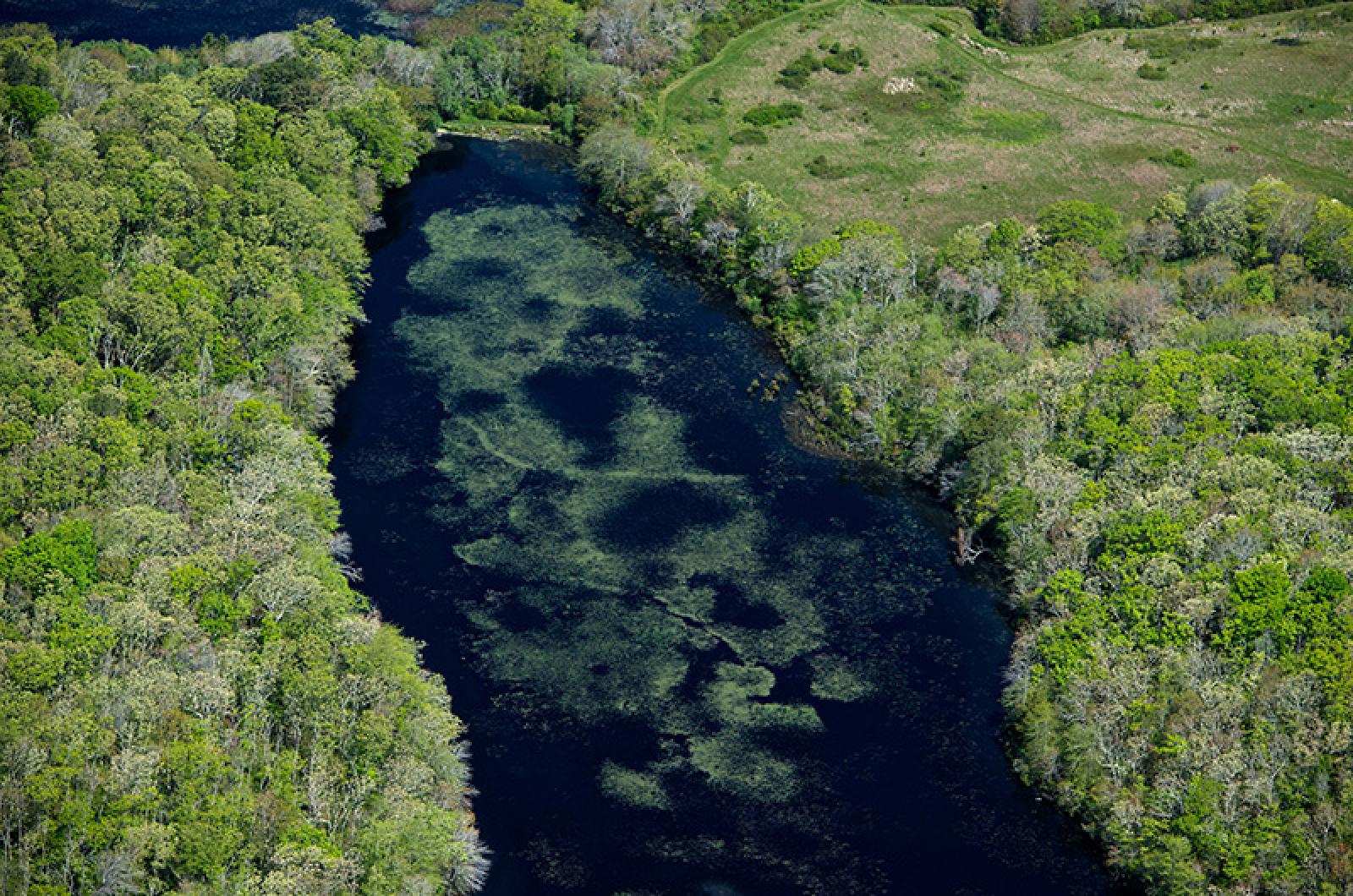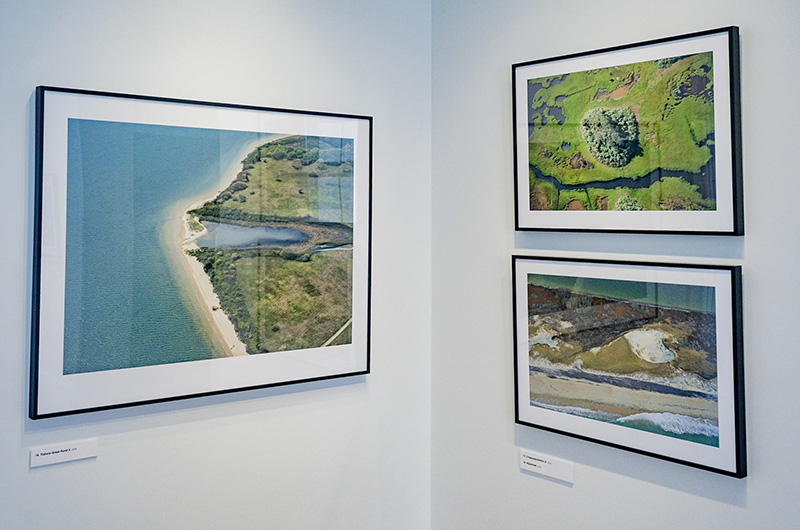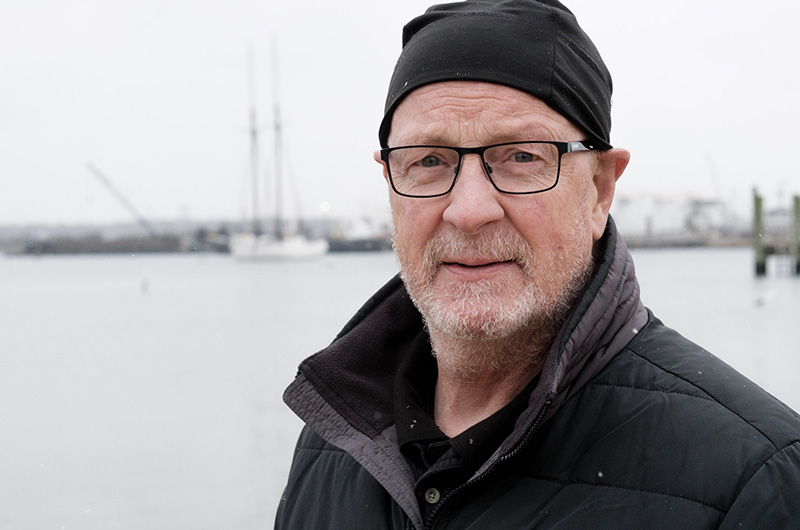There could hardly be a better time than the depths of this pandemic winter for the Martha’s Vineyard Museum to fill two galleries with expansive, transporting Island landscapes by photographer Neal Rantoul.
Mr. Rantoul, who has been shooting here since the 1960s, has long aimed to document the Vineyard’s changing — sometimes vanishing — natural world.
“My feeling was, if I didn’t do that it wasn’t going to get seen in its pure state,” Mr. Rantoul told the Gazette in a telephone interview earlier this year.
Mr. Rantoul’s first Island exhibition since 1995, Neal Rantoul: Above and On the Ground, is actually a pair of shows in one, each taking the viewer on a different Vineyard journey.
On the Ground leads back in time, with a collection of black and white images from the 1980s and 1990s that reflect the timeless beauties of the Island: wave-swept rocks on south shore beaches, still ponds reflecting cloud-streaked skies, sand dunes coated with rippling grasses.
Inspired by Eugene Atget, who photographed the changing city of Paris more than a century ago, Mr. Rantoul shot the series in collaboration with the Vineyard Open Land Foundation for the conservation group’s 1995 show at the Dukes County Historical Society in Edgartown, the museum’s original home. The images were not displayed in public again until the current exhibition opened in January, after Mr. Rantoul donated the prints to the museum.
The other part of Mr. Rantoul’s double show, Above, takes viewers aloft for a colorful, sometimes disorienting aerial tour of present-day Island scenes. One of the most striking images, South Shore (2014), captures a pair of long breakers reaching for the sand. At first glance, the great green waves appear ready to crash out of the frame and directly into the viewer’s face, until the brain — with an almost audible “click” — catches up to the fact that it’s a bird’s-eye view.
Farther up-Island, a shot of the beach in Aquinnah balances the plumelike crest of a crashing wave with the white of a clay pit just beyond the beach.
His aerials also include numerous views of Chappaquiddick, showing a lacework of water, marsh, grass, brush and trees.
Now and then, there are signs of humanity, like the tiny SUV (as seen from above) traveling along a strip of sand at Tom’s Neck on Chappy or the dirt road threading the woods at Job’s Neck Cove in Edgartown.
While using his lens to preserve the Vineyard’s changing landscapes, Mr. Rantoul is also adept at discovering new ways to look at familiar Island features, with nearly-abstract views of Tisbury Great Pond and Katama Bay.
“Coming here my whole life I thought I knew the Vineyard as well as anybody,” Mr. Rantoul writes in his artist’s statement for the show.“But from the air I discover new and remarkable things every time I go up.”
Neal Rantoul: Above and On the Ground is on display at the Martha’s Vineyard Museum through April 25.









Comments (1)
Comments
Comment policy »